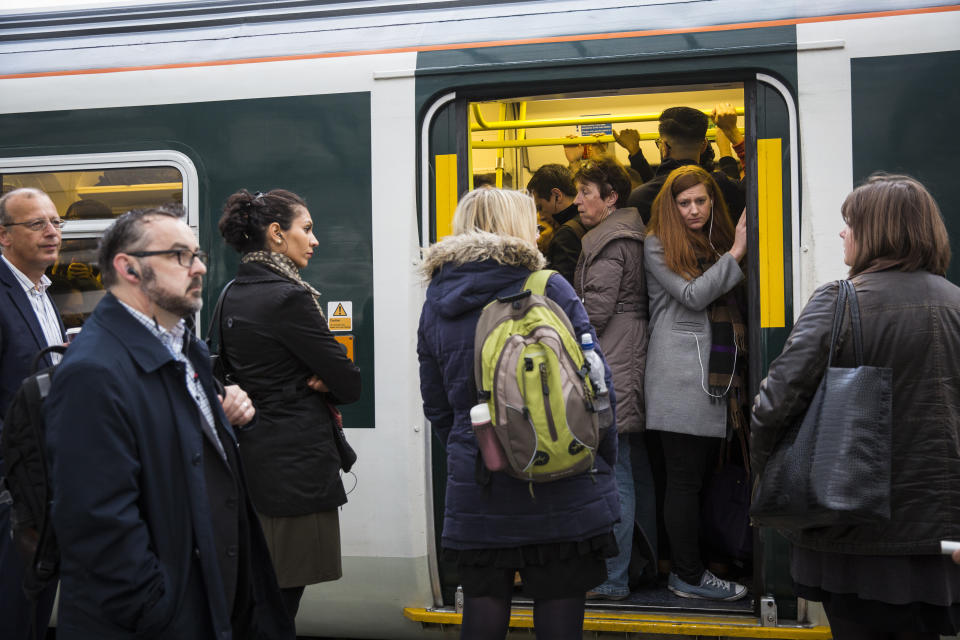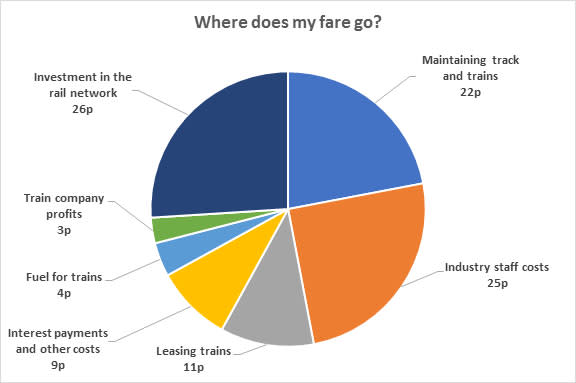Rail fares: why will they rise in January and where does your money go?

Train fares are to increase by an average of 3.4% from the New Year – the biggest jump in prices since 2013.
The increase covers regulated fares – including season tickets – and unregulated fares, such as off-peak fares.
Britain’s hard pressed commuting army was braced for the bad news as the rise in regulated fares had already been capped at July’s retail prices index inflation rate of 3.6%.
MORE: Train fares will go up by 3.4% in January
Unions described today’s confirmation as a “kick in teeth” for rail users, but industry body the Rail Delivery Group pledged to “make the best use of the money” it could.
Why do we still see prices climb every January?
The current version of the fares system lets so-called regulated fares rise by the annual rate of inflation, as measured each July by the Retail Prices Index (RPI), which then stood at 3.6%
About 45% of fares on British rail routes are regulated – season tickets, some off-peak returns, some standard returns, and commuter fares into and out of the London area.
That means rail companies cannot increase them by more than 3.6%.
However, with 55% of fares unregulated, rail firms are free to increase these fares by more.
These include all first class tickets, all advance purchase tickets, and some off-peak fares.
The rail industry, through the Rail Delivery Group, consults widely and runs the proposed increase by the Department for Transport for it to be ratified, coming into effect this time on January 2, 2018.

Why are fares linked to RPI?
Train companies argue some of their heaviest commitments, such as paying Network Rail for access to the tracks and use of the stations, rise each year by the same measure.
Also, under the various franchise agreements with the government, these private companies must pay the government to operate on the routes, which again is linked to RPI.
Put simply, if RPI rises by 3.6%, the train companies’ operating costs are likely to rise by the same, so they have to make the money back somehow.
MORE: Where are the axed Beeching rail lines that could be re-opened?
Where does all your money go?
The Department for Transport says that in the five years to 2019, Network Rail will have spent more than £40bn on maintaining and improving the network.
It says that, on average, 97p of every £1 of a passenger’s fare goes back into the railway.
Since 2007, rail passengers have been expected to pay more of the overall cost of running the country’s rail system, and for taxpayers as a whole to pay less via subsidies.
That has seen passengers’ contribution to the industry’s income rise from 55.6% in 2010-11, to 65% in 2014-15 – and it’s expected to top 70% this past year.

There were 1.7billion journeys a year on our railway last year (2015-16). That’s more than 4.5million journeys a day.
Train companies paid the government more than £800 million net in 2016, helping government to support the biggest investment in our railway since Victorian times.
MORE: These councils have made the biggest profits from parking fees and fines

How much more could you be paying?
The rail industry is quick to highlight that the 3.4% increase is an average – some fares could go up by well below that, while only a few will actually be at the maximum 3.6%.
However, many season ticket travellers will see journeys costing tens, if not hundreds of pounds more, each year from January.
For example, a 12-month season ticket from Brighton to London bought today would cost £4,184 – from January it is expected to rise to £4,332, an increase of £148.
Other examples include:
Liverpool to Manchester – £3,044 – £3,152 – £108
Gloucester to Birmingham – £3,968 – £4,108 – £140
Woking to London – £3,136 – £3,248 – £112
Epsom to London – £2,152 – £2,228 – £76
Ludlow to Hereford – £2,136 – £2,212 – £76
Neath to Cardiff – £1,652 – £1,708 – £56
Maidenhead to London – £2,988 – £3,092 – £104

 Yahoo Finance
Yahoo Finance 
